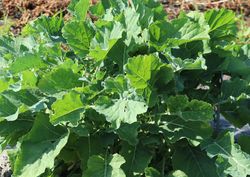 The production of ready-to-sell tree kale plants from the young plants at Lubera Edibles is anything but difficult; you can get tree kale ready for sale or trade in a short time. The strong growth character of tree kale alone ensures that our tree kale young plants develop splendidly shortly after potting and you will have plants ready for sale after about six weeks, especially at cooler production temperatures.
The production of ready-to-sell tree kale plants from the young plants at Lubera Edibles is anything but difficult; you can get tree kale ready for sale or trade in a short time. The strong growth character of tree kale alone ensures that our tree kale young plants develop splendidly shortly after potting and you will have plants ready for sale after about six weeks, especially at cooler production temperatures.
The young plants from Lubera Edibles
As a standard, we deliver our tree kale young plants in 60-cell trays. Normally, the tree kale young plants are produced in the 'Multi' quality, but this can change now, during the market launch, so that we have to deliver already overwintered tree kale young plants of the quality 'Multi+', in order to also meet the demand.
The production process with EverVeges® and with tree kale
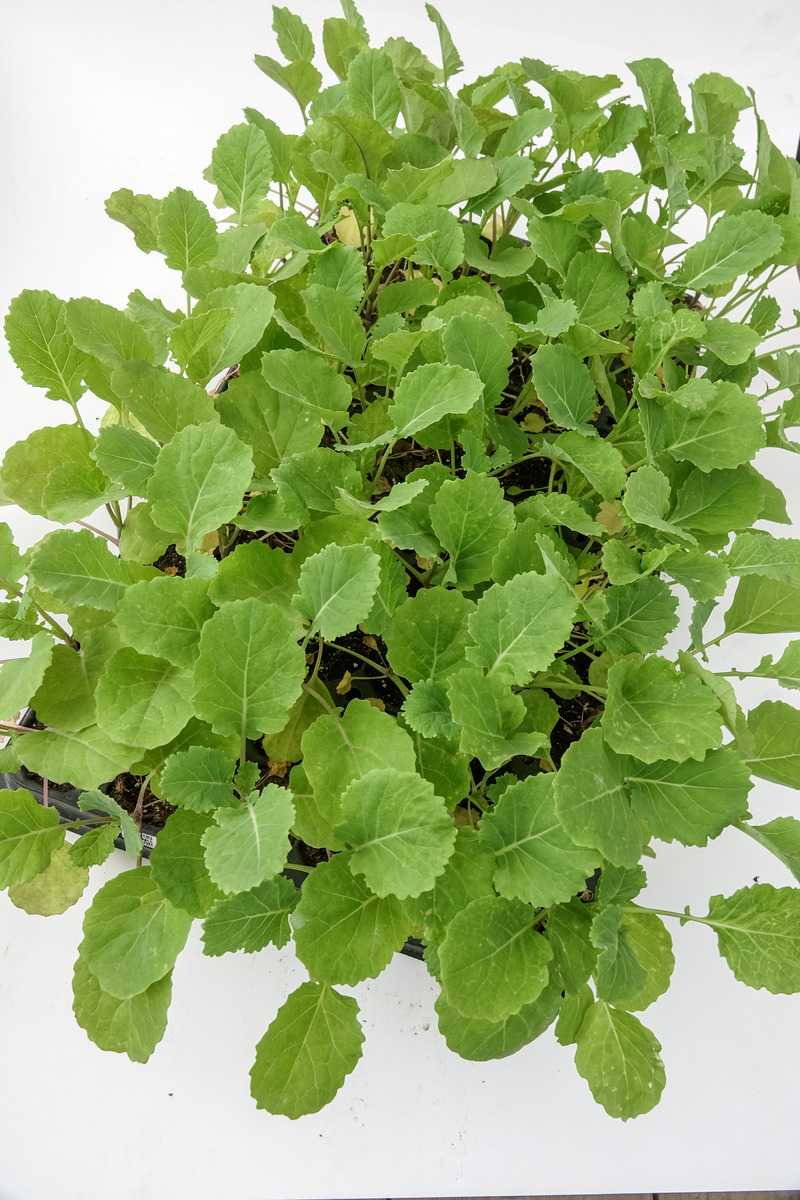
Picture: tree kale young plants in our standard 60-cell-tray
On the whole, the production process with our tree kale young plants differs only slightly – if at all – from the production processes of the other vegetables in the EverVeges® group. The production process is always somewhat divided into the following schematically represented steps:
- Young plant quality: 60-cell trays in ”Multi” quality (annual)
- Delivery time: week 14 – week 16
- Suitable pot size: 9 cm – 17 cm pots
- Substrate: normal potting substrate in the slightly acidic range (pH value between 5.5 – 6.5)
- Location: (slightly) tempered glass or plastic-covered greenhouse
- Cultivation period: 4 – 8 weeks (depending on the pot size and temperature)
- Time of sale: from mid-May (after the last late frosts)
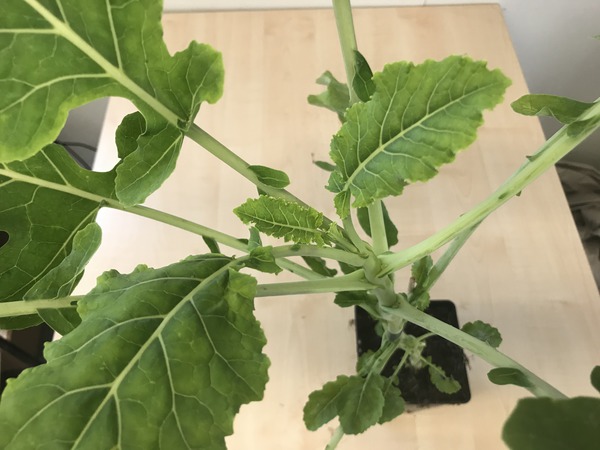
Picture: sellable tree kale plant in C1,3
Especially with the imposingly growing tree kale, it is also possible to repot remaining or specially pre-cultivated plants in approx. 1 L pots as solitary plants in 5-7 L pots after the main sales period in August and sell them ready for harvesting after the summer holidays. In this hot season, make sure that the plants are grown in cooler conditions outdoors or in the shade of a shed – this suits the cabbage better than the blazing summer heat.
The tree kale young plant assortment at Lubera Edibles
By now, we have already shown you how to produce merchantable plants from our tree kale young plants and we have informed you about the advantages that cultivation offers to the end consumer. We have also provided you with a lot of background knowledge about this interesting crop.
Now we would like to introduce you to our current range of tree kale young plants.
Daubenton's Green
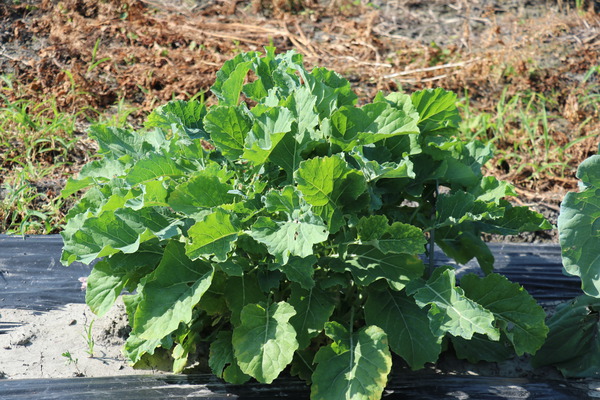
Picture: tree kale 'Daubenton's Green'
The tree kale variety 'Daubenton's Green' is – as the name suggests – a green-leaved variety. This variety is characterised by its strong growth and without pruning, it is free growing, reaching a height up 150 cm high and covering an area of about one square metre. 'Daubenton's Green' has two main growth phases throughout the year. The first of these is in the spring, just after the winter dormancy, and the second is in late summer, when the hottest days are over.
Short description – tree kale 'Daubenton's Green'
- Growth: free growing up to 150 cm; tied up to 200 cm
- Habitat: sunny to semi-shady
- Harvest: late spring – early summer, then again from mid/late October; at least six young leaves should always remain at the shoot tips
- Winter hardiness: down to -15°C; in the first winters it is advisable to protect the roots and the base of the plant
Taunton Deane
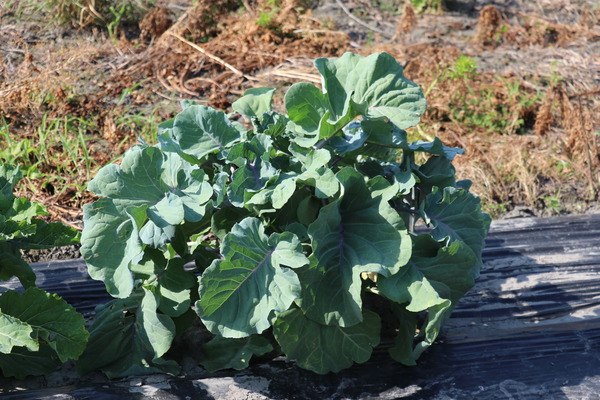
Picture: tree kale 'Taunton Deane'
The tree kale variety 'Taunton Deane' captivates with its blue-green leaves and the striking, purple-coloured leaf veins. Regarding the growth vigour, this tree kale variety is about the same as the green-leaved variety. Comparisons in our test plantings have shown that the tree kale variety 'Taunton Deane' better withstands high summer temperatures and hardly stops its growth.
Short description – tree kale 'Taunton Deane'
- Growth: free growing up to 150 cm; tied up to 200 cm
- Habitat: sunny, the leaves colour better
- Harvest: late spring - early summer, then again from mid/end October; at least six young leaves should always remain at the shoot tips
- Winter hardiness: up to -15°C; in the first winters it is advisable to protect the roots and the base of the plant
Conclusion
As shown, tree kale is a historical and quite unusual vegetable species, but due to its perennial growth character and the wide range of possible uses in the home garden, it is trendier than ever. If we could convince you about the tree kale and thus also of our assortment group Eternal Vegetables®, we look forward to your inquiry or order. And if not all of your questions have been clarified yet, then please do not hesitate and contact us by sending an email to office@luberedibles.com. Together we can put together the ideal Lubera Edibles vegetable assortment for you.
In another article, you can also read all about the origin and cultivation of tree kale and why this plant species should definitely enrich your vegetable assortment.
